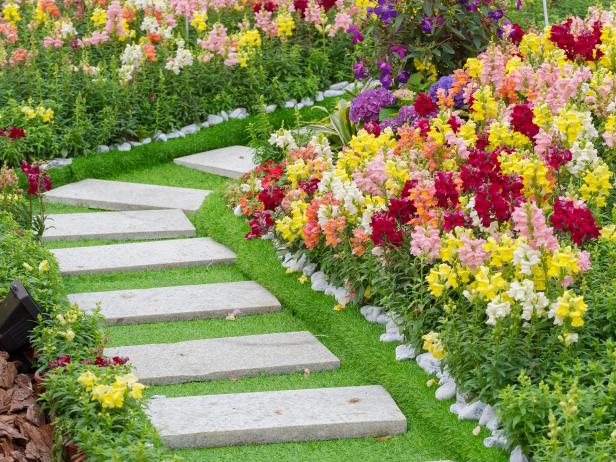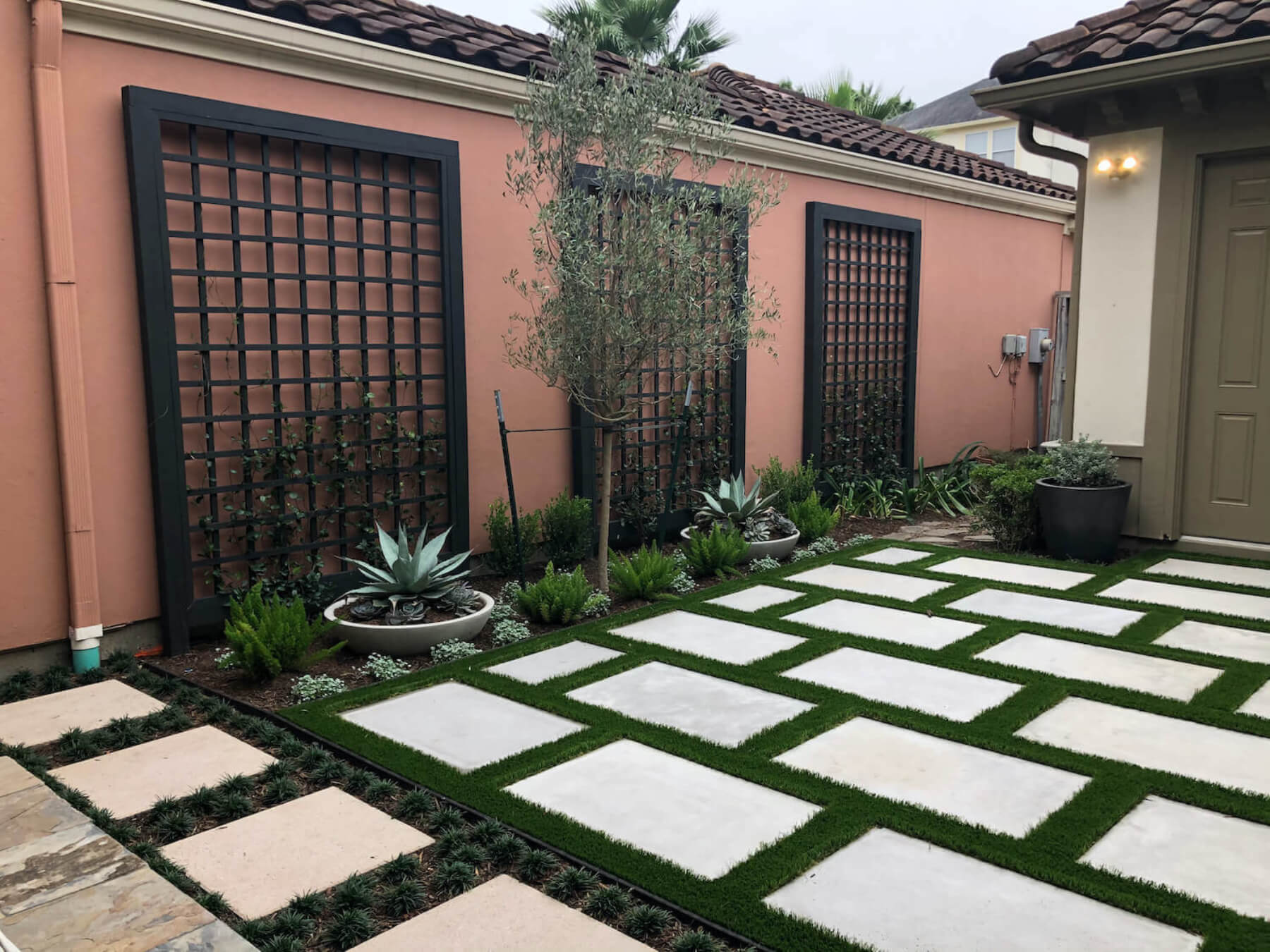The Value of Comprehending Various Sorts Of Landscape Design for Your Yard
Recognizing the various types of landscaping is an important part in crafting a yard that not only shows individual taste but additionally meets eco-friendly needs. Each landscaping style-- be it official, home, sustainable, or metropolitan-- gives distinctive advantages that can substantially affect the overall health and wellness and aesthetic appeals of your outside room. This knowledge is critical in cultivating biodiversity and optimizing source application. However, the effects of these choices expand beyond simple appearances, questioning concerning just how each kind can be incorporated properly right into your details setting. What factors to consider should assist your selection?
Advantages of Landscape Design Expertise
Comprehending the principles of landscaping offers numerous advantages for both beginner and skilled garden enthusiasts alike. A strong grasp of landscaping concepts allows people to create functional and aesthetically appealing exterior spaces that align with their individual choices and the specific characteristics of their yards.
One substantial benefit is improved ecological health and wellness. Understanding of indigenous plants and lasting techniques enables gardeners to grow ecological communities that advertise biodiversity while lessening the requirement for chemical plant foods and pesticides. In addition, comprehending dirt types and water drainage can cause healthier plant development and reduced erosion.
Landscape design expertise additionally boosts the aesthetic worth of a property. By finding out about layout components such as range, color, and texture, gardeners can develop natural and welcoming landscapes that increase curb appeal. This not just elevates individual enjoyment however can additionally boost property worth.
In addition, informed garden enthusiasts can save time and sources. Acknowledging the right plants for certain conditions, such as light and wetness degrees, makes sure that efforts are not squandered on inappropriate selections. Inevitably, a comprehensive understanding of landscape design equips individuals to make educated choices, promoting an extra gratifying gardening experience.
Overview of Landscape Design Types
Landscaping incorporates a variety of designs and techniques, each customized to meet the special requirements and preferences of garden enthusiasts. Understanding these diverse types is vital for developing an outdoor area that aligns with ecological considerations and private preferences.
One popular kind is conventional landscape design, identified by organized formats, distinct flowerbeds, and making use of symmetrical plantings. This style frequently stresses a feeling of order and consistency within the garden - Commercial Landscaping. In comparison, naturalistic landscape design concentrates on simulating the beauty of nature, utilizing organic kinds and indigenous plants to produce a much more loosened up and casual atmosphere
Sustainable landscaping has obtained grip, promoting environmentally friendly methods that conserve water and minimize chemical usage. This strategy commonly integrates xeriscaping, which uses drought-resistant plants ideal for arid climates. In addition, metropolitan landscape design addresses the obstacles of restricted space in city environments, commonly making use of upright gardens and roof areas to make the most of greenery.
Formal Landscape Design Explained
Identified by its thorough layout and organized elements, formal landscaping creates an environment of beauty and elegance in outside rooms. This design highlights proportion, geometric shapes, and well-defined lines, typically incorporating manicured hedges, topiaries, and orderly blossom beds. The total result is a refined and polished environment that accentuates architectural features and enhances the beauty of the surrounding landscape.
In formal landscape design, pathways are normally straight and may be lined with uniform products such as brick or stone. These paths usually result in focal points such as fountains, statuaries, or ornamental trees, even more improving the organized nature of the style. Color schemes often tend to be a lot more minimal, focusing on harmonious mixes that promote a calm atmosphere.
Water attributes in formal landscapes are typically made with accuracy, commonly looking like rectangle-shaped or circular swimming pools. The cautious positioning of plants is crucial, with varieties selected for their capability to keep a clean look throughout the seasons. In general, official landscaping is optimal for those who appreciate order and style, providing an ageless visual that can significantly elevate the value and charm of outdoor spaces.
Home Yard Attributes
Cottage yards often stimulate a sense of beauty and fancifulness, mixing a variety of plants in a seemingly haphazard yet unified setup. Characterized by their rich, casual layout, these yards commonly include an eclectic mix of blooming perennials, veggies, annuals, and herbs. This diverse growing not just develops aesthetic interest yet also brings in advantageous insects and promotes a well balanced ecosystem.
A crucial quality of cottage gardens is their use traditional products and structures. Rock pathways, rustic fence, and wooden trellises are typically included to improve the yard's enchanting appeal. Furthermore, the inclusion of seating locations, such as arbors or benches, motivates relaxation within this calm setting.
Color plays a substantial duty in cottage gardens, with an emphasis on soft pastels and vivid colors that evoke a feeling of fond memories. Flowers like hollyhocks, roses, and foxgloves are staples, often intermingled with fragrant herbs such as lavender and thyme.
Home gardens show an approach of accepting nature's unpredictability, resulting in a distinct and welcoming room. By prioritizing biodiversity and aesthetic charm, they create a picturesque setting for both garden lovers and casual observers alike.
Sustainable Landscape Design Practices
Integrating sustainable landscape design methods is crucial for creating eco pleasant gardens that prosper while minimizing their ecological impact. Commercial Landscaping. Sustainable landscaping concentrates on the effective usage of sources, promoting biodiversity, and improving the natural surroundings
One secret practice is choosing indigenous plants, which are well-adapted to regional conditions and require less water, redirected here fertilizer, and pesticides. This not only conserves resources yet also supports neighborhood wild animals, including pollinators. Applying water-efficient irrigation Learn More systems, such as drip watering or rain harvesting, further saves water while ensuring that plants obtain adequate moisture.

In addition, reducing grass locations and integrating hardscaping aspects can minimize maintenance and resource use. These practices advertise an even more lasting landscape that needs fewer inputs and provides environmental benefits. By accepting these methods, gardeners can produce areas that are not only gorgeous but also contribute positively to the environment, fostering an unified equilibrium in between nature and human activity.

Conclusion
In verdict, a thorough understanding of different landscaping types is essential for developing a cosmetically pleasing and eco sustainable yard. Eventually, accepting varied landscape design methods fosters a harmonious partnership between outdoor areas and their settings, advertising lasting eco-friendly equilibrium.
Comprehending the various kinds of landscape design is a crucial element in crafting a yard that not only shows personal preference however likewise meets environmental requirements. Each landscaping style-- be it formal, home, lasting, or metropolitan-- offers unique benefits that can dramatically affect the total health and looks of your outside space. In contrast, naturalistic landscaping concentrates on imitating the appeal of nature, using natural kinds and native plants site here to produce an extra kicked back and casual atmosphere.
Additionally, city landscaping addresses the difficulties of limited room in city environments, often making use of upright gardens and roof rooms to optimize plant.
In verdict, a comprehensive understanding of various landscaping types is essential for creating an aesthetically pleasing and ecologically sustainable yard. (Landscapers Las Vegas)